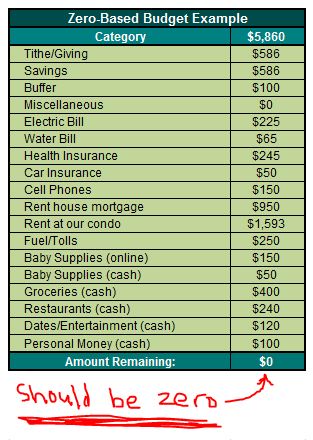
The more information you can provide, the better prepared your QC team and supplier will be. Imagine that your supplier’s factory stitches your logo incorrectly on several product units. But you undoubtedly don’t want your supplier to sell the defective units because your logo is already on them. It would help if you had factory staff overseeing the destruction process to ensure all brand information is no longer legible and all defective units are entirely destroyed. A unit of production (or unit of product) is the item inspected to determine whether it is defective or not or to count the number of defects.
A major defect is one that is likely to result in a customer complaint or return. A major defect is also one that will most likely result in product failure after a period of time that is considered unacceptable to the customer or end user. A major defect will usually (but not always) be obvious to the inspector during the visual garment inspection. A critical defect is one that is likely to result in hazardous or unsafe conditions when using the product. A critical defect is also a deviation from delivery requirements that prevent the product from being received. If one (1) occurrence of critical defect is observed during the inspection, the entire lot will be rejected.
Major defect
Their report will typically show you the total number of defects found in comparison to the number of defects allowed based on your tolerances. A product with a major defect departs significantly from the buyer’s product specifications. Major defects are those which could adversely affect the function, performance or appearance of a product.
Embracing imperfection for quantum technologies Physics Today … – pubs.aip.org
Embracing imperfection for quantum technologies Physics Today ….
Posted: Tue, 01 Aug 2023 12:00:48 GMT [source]
However, carefully consider all your options before resorting to product destruction. Such an approach is appropriate if you want to protect your brand from substandard, counterfeit goods or prevent your competitors and resellers from buying and selling defective goods. The three levels used in international standards are Tightened, Normal and Reduced inspection.
Failure to meet requirements for quality characteristics are usually described in terms of defects or defectives. An assessment evaluates the level of compliance of products against specific quality standards. The evaluation process includes observation, data collection, and analysis. An appearance check is one of the most basic controls performed during an inspection. It aims to verify the product’s general aspect and looks for defects mainly related to weak manufacturing processes and in-line quality control problems. It defines the quality level that is the worst tolerable process average when a continuing series of lots is submitted for acceptance sampling.
All tests performed in a controlled environment to verify the safety and conformity of consumer goods to regulations and standards required in specific destination countries. An inspection protocol defines all the processes and steps involved in performing the inspection. The extent of nonconformance of a product is expressed as either percent defective or defects per hundred units (DHU). An audit is the inspection of a manufacturer by a third-party organization to verify compliance with your standards and/or international standards such as ISO 9001, SA8000, ISO 14000. An accredited laboratory is officially recognized as able to perform specific types of testing, measurement, and calibration. They are seen to be reliable and professional and will issue valid test certificates acceptable to Customs at your product’s destination.
Rejected shipment
Your inspector checks a desk, and the surface measures 66.7 cm wide. However, according to your product specifications, it should measure exactly 66 cm wide. These defects put businesses at serious risk of product liability issues, lawsuits and product recalls. And these defects would likely cause a customer to return the product, lodge a complaint or request a refund in response. A requirement for a product to have NO defects for it to be compliant and acceptable. It is the margin of error accepted by the buyer regarding deviations between the product specifications and the finished goods.
It validates the ability of a third-party quality control company to perform inspection services with integrity, objectivity, and expertise. Quality control, quality assurance, and quality management are all important concepts in the world… If you’d like to learn more about our product inspection services, please get in touch with us. And if you’d like to get a complete overview of AQL sampling, we recommend downloading the guide below. The process of defect brainstorming will vary depending on whether it’s for a new product or one you’ve already sold before.
A Nonconformance may be defined as the failure of a unit of product to conform to specified requirements for any stated quality characteristic. The extent of nonconformance of product to the required quality characteristics is expressed in terms of either percent defective or defects per hundred units (DHU). A continuous sampling is appropriate for processes that deliver a continuous flow of a product rather than batches. In this plan, we begin by inspecting 100 % of the units coming from the process. After a certain number of items inspected show no defects, the sampling decreases to a fraction of the items.
Note that product rework is appropriate when the defects can be easily fixed in a short amount of time and require minimal effort. For instance, some product units have the wrong barcodes printed on the label, or the CE marking symbol doesn’t have the correct dimensions. Fixing such defects can improve the quality of the affected products to an acceptable level, typically without increasing your costs or causing additional quality problems. Third-party inspection companies can inspect your order and report to you the number and types of defects found in the inspected sample size.
Container Loading Inspection (CLI)
The shipment you received doesn’t pass the quality control inspection? In such a case, one of the most common measures you can take is to ask your supplier to rework the unacceptable defects in the affected products. An importer’s tolerance for minor defects tends to be greater than that for major or critical defects, given their relative severity. Ensure you update your quality control checklist with the latest inspection results to prevent the recurrence of the same types of product defects in the future.

They might give you a poor review and return the item, hurting your brand reputation. Another example of a minor defect would be a slight color variance, such as a stapler that is supposed to be cobalt blue but is more of an azure blue. The difference is only noticeable when you compare it side-by-side with your golden sample.
Inspection Levels
They follow a pre-established checklist based on the product specifications. Inspected products can be anything, from the components used to produce the end-product to semi-finished goods to finished goods ready for shipment to a customer. Quality inspectors rely on different types of tools to perform their tasks. For instance, they use hand-held measurement devices and electronic inspection equipment. At the end of the quality control inspection, they record the results and prepare test reports. A major defect is one, that is likely to result in failure, or to materially reduce the usability of the unit of product for its intended purpose.

If the batch of products meets the benchmark, they are said to have the AQL while if they fail to achieve the said standard, the entire batch of products is rejected. The quantity in the percentage of rejection is known as rejected quality level. The acceptance number is the maximum number of defects or defective units that a sample of products from a manufacturing process can have for acceptance of the lot or batch.
Defects and Defectives
This contract is prepared by the buyer and the supplier and presented to the bank for validation. A letter of credit usually requires an inspection certificate for the release of payment. A fail result is a consequence of identifying at least one non-conformity outside the tolerance level defined by the buyer. Accreditation is granted by governmental or internationally recognized organizations.

For instance, add new and relevant information such as adjustments to product dimensions, new or updated quality standards criteria, changes to product components, etc. Sometimes, you may need to take a different approach to address quality defects. Such an approach can types of defects in quality control include chargebacks or other penalties, typically set out in the agreement with your supplier. For instance, the contract may state that the supplier will bear any costs for re-inspections and pay the penalty for any substandard units shipped over a certain quantity.
Difference between quality defects, deviations, observations, NCRs and findings
The decreased sampling continues until we find a nonconforming unit. At that point, the plan reverts to 100 % inspection and follows the same pattern. Once you’ve got a list of defects down on paper, consider how to classify them as minor, major, and critical. Put together any photos you can, share the defects with your third-party inspector, and see if they have any suggestions about what to add. You will now be more prepared to develop your inspection checklist and be on your way to conducting effective inspections.
- In this plan, we begin by inspecting 100 % of the units coming from the process.
- The root cause is the origin of a workmanship defect or non-conformity.
- But it’s ultimately up to you as the buyer to specify your tolerance for each kind of quality defect.
- A batch or lot is a collection of products which are identical in size and type, which have been produced under similar conditions, at the same time.
- Human hands involved in sewing and stitching, for example, raise variability in production.
A stapler that says it’s cobalt blue on the box but is actually cherry red is a glaring mistake. And a lock with a key that doesn’t open it or a pair of skinny jeans labeled as relaxed fit will not go over well.
The buyer does not accept the goods and refuses to ship them to the destination country. A letter of credit is a contract that provides a safe payment method protecting buyers and suppliers. It stipulates the conditions under which a payment can be released from the buyer’s bank account to the supplier’s.

